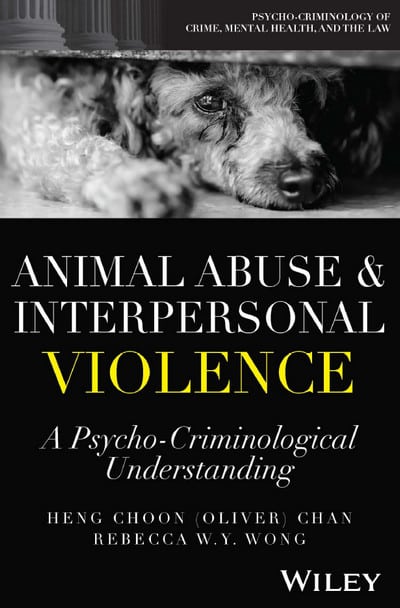Animal abuse is an insidious phenomenon that affects countless creatures worldwide. It occurs in various forms, ranging from neglect and abandonment to more overtly cruel actions. The complexities surrounding animal cruelty necessitate a multifaceted approach, particularly from veterinary professionals. These practitioners, who have pledged to protect animal welfare, often find themselves at the frontline of a troubling convergence: where compassion meets crime. Understanding how veterinarians navigate this intricate landscape reveals not only their critical role in the fight against animal cruelty but also the psychological ramifications of such cases on their own well-being.
At the core of veterinary practice lies a profound ethos of compassion for all living beings. This intrinsic motivation empowers veterinarians to investigate animal abuse cases with diligence and care. However, their role extends beyond mere medical intervention. Vets are often the first responders in situations where abuse is suspected, wielding an understandable authority due to their expertise in animal health and behavior. Their insights are indispensable in diagnosing injuries and conditions that may indicate abuse, but they also serve as crucial witnesses in legal proceedings.
Animals cannot communicate verbally, which necessitates a unique skill set among veterinarians. They must be adept at interpreting subtle signs of distress, pain, or trauma that animals exhibit. For instance, a dog that flinches at the sight of a hand could be a signal of past abuse, while an underweight cat may indicate neglect. These professionals are trained to meticulously examine physical symptoms, such as untreated wounds, starvation, and behavioral anomalies. Their findings often galvanize necessary legal actions, but they also lead to deeper investigations into the human perpetrators behind these heinous acts.
The responsibility vested in veterinarians can weigh heavily. They confront the paradox of nurturing animals while simultaneously uncovering the dark realities of human cruelty. This dichotomy can lead to emotional and psychological turbulence. Often, veterinarians experience a phenomenon known as vicarious trauma—an emotional response that manifests through exposure to the distress experienced by those they aid. This psychological burden fosters a complex interplay between their empathetic inclinations and the unsettling truths they uncover.
Additionally, collaboration with law enforcement and animal welfare organizations plays a pivotal role in how veterinarians handle animal cruelty cases. By working closely with these entities, vets contribute to the formulation of comprehensive strategies that encompass legal, medical, and social dimensions of animal abuse. For example, a veterinarian might provide critical testimony regarding the condition of an animal; thus, strengthening a case against an abuser, while also working with shelters to rehabilitate victims of such trauma. This synergy not only facilitates cases but nurtures a broader cultural shift towards accountability for animal welfare.
A salient observation is that fascination with animal cruelty often stems from its incongruity in a society that prides itself on being humane and compassionate. Individuals may be drawn to stories of abuse and subsequent rescue, captivated by how embedded cruelty can function within the mundane structures of daily life. This juxtaposition invites deeper reflection on human nature, ethics, and societal constructs. It beckons an essential question: why do some individuals succumb to the allure of harm over empathy? While no single answer suffices, recognizing that prejudices, ignorance, and the effects of socioeconomic constraints often contribute to abusive behavior is a necessary step.
Furthermore, education plays a critical role in mitigating animal abuse. Veterinary professionals are increasingly stepping into educational roles, championing initiatives designed to raise awareness about humane treatment and the legal implications of animal cruelty. They present workshops, engage in community outreach, and collaborate with schools to instill compassion for animals from a young age. Such initiatives are crucial, as they help dismantle stereotypes surrounding animal abuse and foster a collective responsibility for animal welfare.
Another dimension shaping the response to animal cruelty is the evolution of public attitudes towards animals. The growing recognition of pets as family members has compounded the urgency to address instances of abuse. This newfound paradigm shift markedly influences how society responds to veterinarians’ observations. Cases that may have previously been dismissed are now met with increased awareness and advocacy, thereby empowering veterinarians to take a more assertive stance when confronting suspected abuse.
One cannot ignore the legal ramifications that veterinarians face in handling animal abuse cases. Many jurisdictions now mandate reporting suspected abuse, putting veterinarians in a precarious position where they must navigate ethical considerations while adhering to legal obligations. Their professional integrity hinges on ensuring that they operate within the bounds of the law while striving to protect the animals in their care.
Ultimately, when compassion meets crime, veterinary professionals remain steadfast allies in the pursuit of justice for abused animals. Their unique vantage point equips them with the essential skills to identify abuse and advocate for the voiceless. As societal awareness of animal welfare continues to evolve, so too will the strategies employed by veterinarians in addressing this pervasive issue. The work done by veterinarians reflects a broader cultural commitment to empathy, highlighting the necessity of protecting those who cannot protect themselves, and calling on all members of society to raise the collective bar on compassion.






